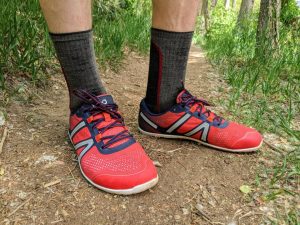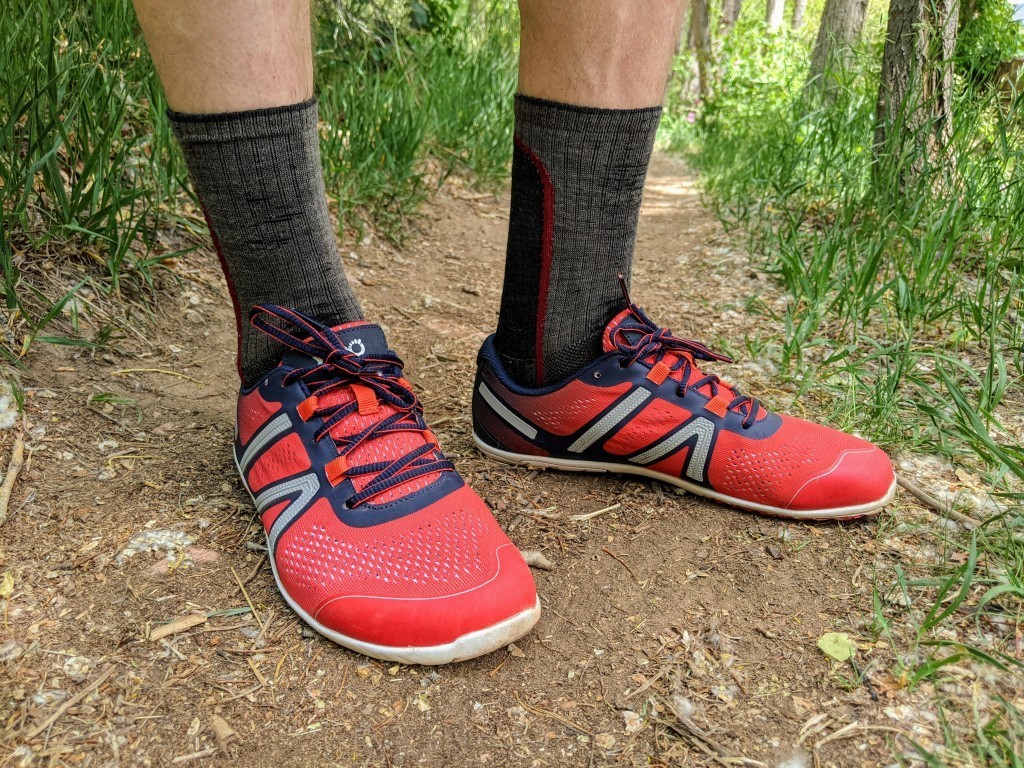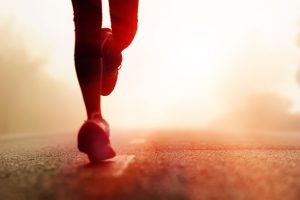Running: Part 3 – Supportive Shoes vs “Barefoot” Shoes
By now most runners will have heard of barefoot shoes or even tried them. What we wear on our feet can have a major impact on how they function. A shoe that fits well, has good grip on the desired surface and feels comfortable will make running much more enjoyable and productive.
The choice of how much support or cushioning your running shoe provides has become more popular in the last 10 years.
A supportive shoe will often have:
- midfoot support to assist with controlling the arch of the foot during each step
- plenty of cushioning in the heel and throughout the forefoot to protect us from the hard surfaces many of us run on.
- A difference in height between the heel and the toe, the heel being higher
- A narrow toe box area to prevent the foot sliding within the shoe
Most of us will have been wearing this style of shoe since we were born. Some runners will have been in these shoes hitting personal bests, running for years without too many injuries or issues and probably don’t need to change anything.
But every runner will have a different story. Some may have been bouncing from injury to injury for years without really reaching their goals in running, often grinding through pain and discomfort along the way. Some might have tried custom orthotics and found them a helpful solution. Others might have found orthotics only made things worse.
Physiotherapy has likely helped along the way but sometimes injuries do return. Running is an activity where you multiply every impact over thousands and thousands of steps. So even if a small amount of stress is occurring on a particular tissue, it will build up over time and eventually let you know about it in a painful way.
What’s a “barefoot” shoe and why are they becoming more popular?

- Minimal to no midfoot/arch support and feel very flexible. Your foot has its own arch that is meant to provide all the support and control you need.
- No cushioning – most barefoot shoes have a thin insole and a layer of rubber to protect your skin from the concrete. The decrease in cushioning requires you to absorb more impact with your muscles (which is what they are designed to do) and reduces the forces you put through your heel when it strikes the ground, reducing impact on your joints.
- No difference between heel and toe height, often referred to as “0mm drop”. A lift in the heel changes the tension in muscles and the angles of joints all the way up the bodies kinetic chain.
- A wide toe box- which allows for your toes and midfoot to spread out, grip the ground and support itself better.
All of the above are meant to let your foot and body function the way it did for the thousands of years before running shoes were invented. Just like how sitting more often and working at the computer can be linked to an increase in neck and back pain, footwear can also be linked to changing how our feet look and function. If our feet are not working properly, how are we supposed to walk and run without issues?
So should I immediately go out and start running in barefoot shoes and never use my old shoes again??
NO! Doing that will likely cause a lot of trouble very quickly and just like our previous blog, a proper programme is needed. Most of us have developed our lower body muscles and running gait using our current footwear throughout our lifetime. It won’t happen overnight and will take slow progression and exposure to build the muscles and strength in the foot to handle a barefoot shoe. Just like any exercise or activity, doing too much too fast can lead to injury.
Barefoot style footwear may not be for everyone but is certainly something to consider for those wanting to unlock their running potential and perhaps reduce recurring injuries of the foot, knee hip and back that have not resolved with other methods.
Keys to success when switching to barefoot style shoes
1 – Pick ones you like and will actually wear. Many brands are starting to make this style of “barefoot” shoe. So, you have the option to choose whether you may like the individual toes you might have seen others walking around with.
2 – Start out with walking only, and increase the time and/or distance slowly over the course of a few weeks.
3- When walking is not uncomfortable, slowly add in running, again increasing time or distance over several weeks to months. It’s a good idea to start on grass or a softer surface than going straight to running on concrete. Slow progression is very important!
4- Listen to your body, if you’re getting any early signs of pain or discomfort it means you are progressing too quickly.
5- Your running gait may need to change. Most cushioned shoes promote a heavy heel strike, which will not feel comfortable in barefoot shoes. Shorten your stride length and strike the ground more evenly throughout the length of the foot.
6- Consider supplementing your progress with foot and lower body exercises and stretches that focus on balance and control. Your physiotherapist will be able to provide you with many different exercises. This will help you progress or deal with any roadblocks along the way.
Most runners will use the “barefoot” method as a cross training or adjunct to their normal training. It is recommended that you do one to two sessions a week barefoot on a soft surface. Then train the rest of the week in a standard running shoe on a hard surface for the longer distances. Ultimately it will come down to listening to your body and quantifying your results. Therefore and figuring out what is working best for your particular running style and body type.
This article by Gearlab gives a comprehensive guide to 2022 products available in the barefoot runners space https://www.outdoorgearlab.com/topics/shoes-and-boots/best-barefoot-shoes
If you’re looking for expert advice with your running journey, you can book in to see one of our physiotherapists, today! You can do this by either booking online or giving us a call on (02) 9267 3775.


